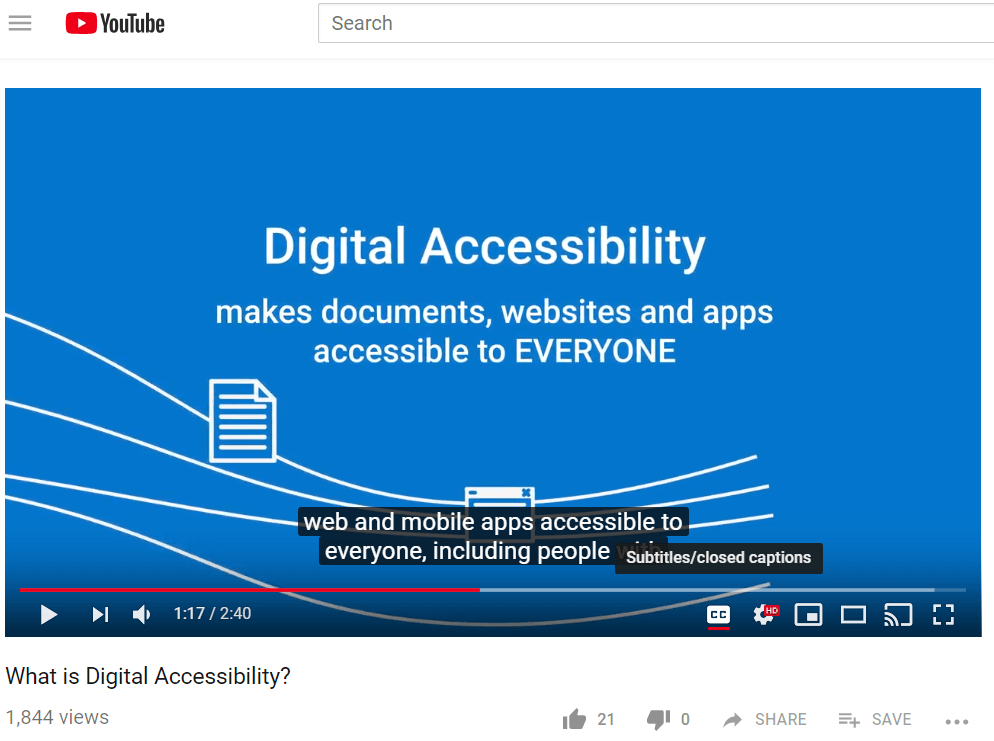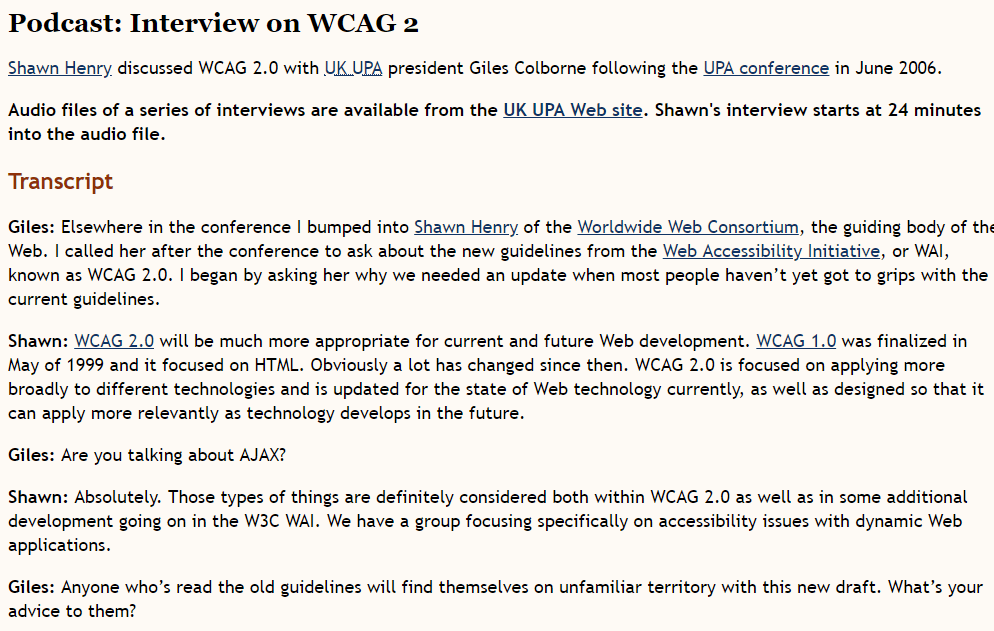Multimedia Accessibility: Is it important?
It’s no surprise that blind people can’t see your multimedia and deaf people can’t hear it. What IS surprising though is the frequency with which content creators overlook this fact when creating multimedia. In the United States alone, 11.4M people have a hearing disability and 7.7M people have a vision disability. This demographic of nearly 20M people find your text, images, audio and video, nearly useless and likely will take their attention and business elsewhere.
The good news is that making your multimedia content accessible to people with disabilities isn’t actually that difficult, as we have certain rules that specify how and what needs to be done to ensure your multimedia is accessible. Let’s explore how.
What is multimedia accessibility?
Multimedia accessibility can be explained as the delivery of the information, intent and content presented in videos and audios immaterial of user’s disability. The core areas of multimedia accessibility are – synchronized captions, text transcripts and audio descriptions.
Synchronized Captions
Captions are the text format equivalent of the spoken audio from within a video. Captions address the need of users who cannot access audio. By providing content information via a textual format, all users, including your deaf users, stand to benefit.
The following screenshot from a youtube video, showcases captions explaining what is happening on the screen. Ideally captions must identify background sounds, speakers and any other important information that is being conveyed. They also should have a good color contrast with foreground and background colors to have a good legibility.

The three main criteria that need to be considered for captions are:
- Synchronized – captions must be synchronized or available at the same time with the video and audio content.
- Accessible – captions must be accessible with respect to color contrast of the text and background or even the placement of the text on the video.
- Textual equivalent – captions must present the same content that is available in the audio track of the multimedia content.
Intended Users for Captions – Deaf users and any users who do not comprehend the language or slang, in which dialogues are spoken.
Text Transcripts
Text transcripts are a way for deaf and deaf-blind users to know the content of an audio podcast. Transcripts include the verbatim dialogue (words spoken) and additional details, for example when there is laughter sound, the same should be mentioned in the transcript. Captions must be present for a video file whereas transcript alone will suffice the need for audio only content.
The image below showcases how a transcript file might be organized. Transcript consists of all the verbatim dialogues that are being spoken by the speakers in an audio or video file. For example, image showcases the conversation between 2 individuals – Shawn and Giles.
Text transcripts are vital because they allow people who are deaf the ability to understand the content that is present in any multimedia file. Again, it is important that we make this content accessible by ensuring good color contrast between the foreground and background along with font size and style to ensure readability of the transcripts.

Intended Users for Text Transcripts – Deaf, blind and Deaf-blind users
Audio Descriptions
Audio description is mainly aimed at users with visual disabilities. Key context can easily be lost without the visual information from a video. Relying only on the dialogue often won’t convey everything that’s happening in a video. An example might be a scene in a movie where a person (and the audience) can see a snake but the only audio is the person screaming in fear. The sighted audience understands why the person is screaming. The non-sighted user needs to know about the visual part of the scene (the snake). As sighted users, we understand the context and content but for non-sighted user the same doesn’t apply. Audio descriptions address that gap and thus are very important for blind and visually impaired users.
Here is a great example from the ABA, describing a scene from a popular animated movie.
Audio description must be provided for videos where there is important visual information that is not conveyed by the dialogue. Verbal explanation of what is being visually shown is what makes an audio description useful for non-sighted users. If you’d like more examples, feel free to visit the Audio Description Project – Initiative by American Blind Association website.
Intended Users for Audio Description – Blind users
Conclusion
After this brief read, you might have an idea on what needs to be done in order to make your multimedia assets accessible. If you can add captions, audio descriptions and text transcripts to your multimedia, you’ll be providing all users an equal and inclusive experience. Not only will this improve the overall user experience, your multimedia and web traffic will also benefit from the expanded user base, will see an increase in search engine rankings as well as revenue.